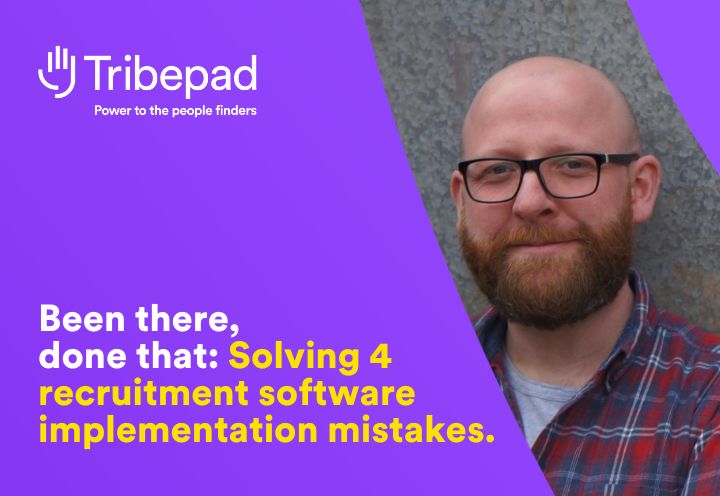Quality of hire is arguably recruiters’ single most important metric. But the question of how to measure quality of hire is subject to near-endless debate. Without any black-and-white quality of hire metrics, we’re left with general indicators more than definitive answers. But they’re indicators it’s well-worth getting to grips with.
When it comes to data-driven recruitment, quality of hire is the gold standard.
It’s a measure of your team’s business impact, because at its core that’s what effective recruitment’s all about: increasing the organisation’s productivity per capita. Hire better people who add value for longer, and that’s what you’re doing.
But for all its importance, many organisations still aren’t sure how to measure quality of hire. And as we’ve said a bazillion times, what you don’t measure you can’t improve.
Here’s what you need to know, to get a handle on quality of hire and start proving – and improving – recruitment’s impact.
What does quality of hire mean?
Quality of hire measures how much value new hires deliver to the organisation. It assesses how much your people contribute over time, looking at their performance and tenure.
In other words, quality of hire tells you whether recruitment has paid off – for this hire, and more broadly, how your talent acquisition function is performing.
The long and short is, quality of hire matters. Measuring quality of hire is the start of improving quality of hire – improving productivity per capita, to improve the ROI of recruitment.
What are quality of hire metrics?
Quality of hire can be complex to understand because there isn’t one single metric that captures quality. Instead, there are multiple indicators that reflect aspects of the quality equation.
Have you heard the story of the blind men feeling the elephant? It’s sort of like that. Each metric reveals a different part of the elephant, but it’s difficult to gain an overarching perspective that understands the whole.
That’s a good warning to remember before drawing any conclusions based on quality of hire metrics.
For example, maybe the hiring manager isn’t satisfied with a new hire – but that alone isn’t enough to conclude a hire isn’t ‘quality’. There’s nuance. Maybe there’s a personality clash, for instance, and a great solution for the business could be switching the new hire to another team.
Or perhaps a new hires’ error rate is high – but that could just as easily indicate a problem with your training or suggest some extra support is needed.
To get a handle on quality of hire, you need to feel as much of the elephant as possible. The more indicators you collect, the richer the picture you’ll paint. And the more confidence you can have in your conclusions.
How to measure quality of hire: 3 main indicators
1. Performance/productivity
This is one of the most common approaches to measure quality of hire. The bottom line is, you hired someone to do a job. So it makes sense to measure their effectiveness at doing what you hired them for.
To understand performance, you might look at some combination of qualitative and quantitative data, like:
- Performance appraisals
- Error/rework rates
- Task completion rates
- Hiring manager satisfaction
- Team feedback
- Early goals hit/miss rate
- Promotion/salary increase rate
2. Retention/turnover
Quality of hire is an attempt to measure employee lifetime value – that is, how much value employees deliver over their lifetime at your company. Performance is one major element; the other is tenure. Even the highest performing employee would have a low lifetime value if they left in six months.
In particular, you’ll likely want to track early turnover – usually considered turnover that happens within the first year. The later new hires leave, though, the harder it becomes to ascribe their loss to recruitment.
Say you hire someone and they leave in their first week. In that situation it’s pretty clear there are lessons there for recruitment. Maybe job expectations were mismatched, or onboarding wasn’t handled well.
But if you hire someone and they leave in 6 months, the issue might be mismatched expectations. But it might also be about culture, training, manager relationship, or many other factors.
For that reason, retention is generally more useful when considered as a trend than on an individual basis, so you can spot wider people issues across the organisation.
3. Employee engagement
Over the past several years, there’s been robust evidence showing that engaged employees deliver better work, stay longer, and have a bigger positive knock-on impact on your culture. Like this study from Gallup, as one much-cited example.
Employee engagement might not be a direct measurement of quality, but it can add useful context to other quality of hire metrics. Especially seeing as you’re probably already collecting engagement data anyway, with employee surveys and/or interviews.
For example, a new hire might not be performing as you hope (yet). But if they’re highly engaged, that’s a great indicator they’ll become productive – potentially with some extra support.
And it’s a great indicator that they’re having a positive impact on your culture and the people around them, which can improve productivity more widely even if their individual performance isn’t up to scratch yet.
How to measure quality of hire? Get more hands on the elephant…
If you googled ‘how to measure quality of hire’ looking for one single, simple answer – sorry. No can do.
The concept of ‘quality’ has a heap of nuance, both as a general concept and within each organisation. What quality means for you might be totally different from another company.
But just because there are no specific quality of hire metrics doesn’t mean you can’t measure quality.
The important things are standardisation and consistency. Define what quality of hire means for you, pick quality of hire metrics (indicators) that align, then track them consistently. That’ll give you a reasonable idea of how your new hires, and your recruitment function, is performing over time.
But just remember the elephant.
Don’t get lulled into a false sense of either confidence or panic, because the truth is that you’ve never quite got the full picture. Rather, use the data to understand trends and reveal other angles to investigate – to continually build your understanding of the animal in front of you. Maybe it was never an elephant at all…
Tribepad is the trusted tech ally to smart(er) recruiters everywhere. Combining ATS, CRM, Video Interviewing, and Onboarding, our talent acquisition software is a springboard for fairer, faster, better recruitment for everyone.
Trusted by organisations like Tesco, NHS Professionals, and Subway, 25-million people in 16 languages use Tribepad.




